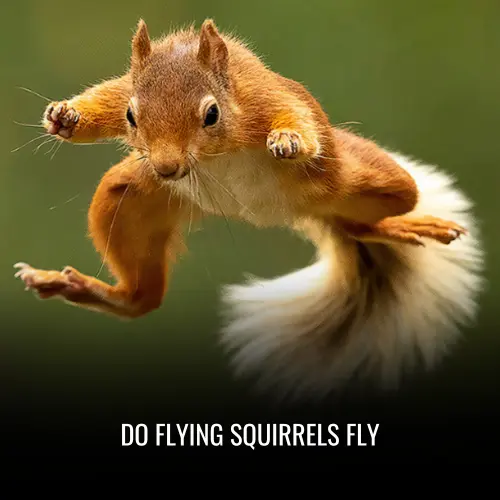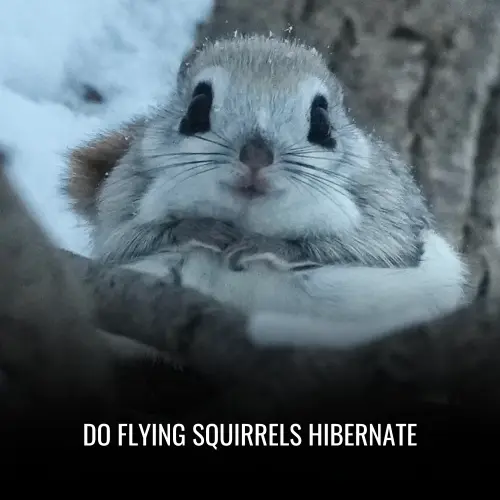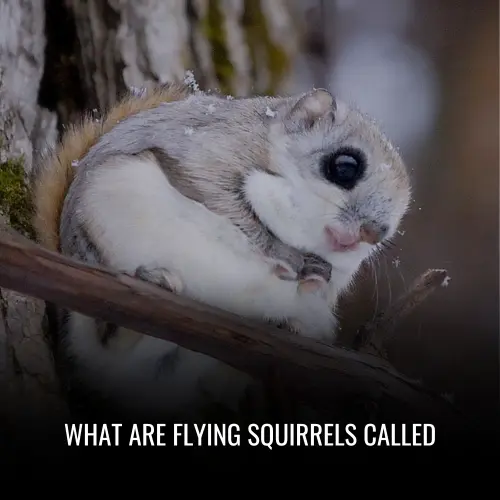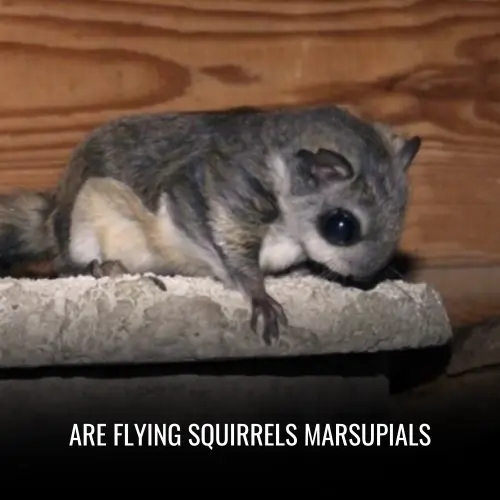Are Flying Squirrels Dangerous
Flying squirrels are not dangerous to humans, but they can pose a threat to your property. When these squirrels enter homes, they can cause damage by chewing through wires, pipes, drywall, and insulation. This destruction can potentially lead to fire and water damage in the property. It is important to take necessary measures to prevent flying squirrels from entering your home to avoid these risks.

Do Flying Squirrels Bite
Yes, flying squirrels can bite if they feel provoked or scared. They have sharp teeth that can cause pain and injury. It’s important to handle them cautiously and avoid provoking them to prevent getting bitten. Additionally, flying squirrels can carry parasites and diseases, such as lice, fleas, and potentially typhus, so it’s best to avoid close contact with them.
Why Are Flying Squirrels In My Home
Flying squirrels may enter your home in search of warm and safe shelter during the winter months. They can access your home through chimneys, roofline holes, unsecured vents, or holes in siding. Once inside, they are commonly found in attics, wall voids, under floors, and insulation. It is important to address any entry points and remove the squirrels from your home to prevent damage and potential health risks.
Damage Flying Squirrels Create
It’s important to be aware of the damage that flying squirrels can cause. Here are some signs that indicate their presence and the harm they can create.
1. Torn Attic Insulation and Nests
Flying squirrels often tear up attic insulation and use it to build their nests. If you notice torn insulation or find nests made of stored clothing, it’s a clear sign that flying squirrels have been active in your home. This can lead to reduced insulation effectiveness and the need for costly repairs.
2. Chewed Wires
Flying squirrels have a tendency to chew on wires, which can cause power shortages or even start a fire. If you discover wires that have been chewed on, it’s crucial to address the issue promptly to prevent any electrical hazards.
3. Ammonia Smell
One unpleasant aftermath of flying squirrels is the strong smell of ammonia. This scent is left behind from their urine and can be quite unbearable. If you detect a strong ammonia odor in your home, it’s a sign that flying squirrels have been present and left their mark.
4. Droppings
Finding droppings scattered around your house is a definite indicator of flying squirrel activity. These droppings are not only unsightly but also pose a health risk as they can carry diseases. Proper cleaning and prevention measures should be taken to ensure a safe and sanitary environment.
If you observe any of these signs of damage caused by flying squirrels, it’s important to take immediate action to address the issue. Seeking professional assistance can help effectively remove the squirrels from your home and prevent further damage.
Signs of a Flying Squirrel Infestation
Spotting signs of a flying squirrel infestation is important in order to address the issue promptly. Some common signs include chew marks on wood or the roofline, as well as small entry points. Additionally, you may hear constant chatter and playful sounds from the squirrels, especially in the evening.
Flying squirrels are social creatures and often live in colonies of around 20 individuals. If you notice any of these signs, it is recommended to seek professional assistance to handle the infestation effectively.
How to Prevent Flying Squirrel
Preventing flying squirrels from entering your home is crucial to avoid damage and potential infestations. Here are some effective prevention tips:
1. Inspect and Seal Entry Points
Thoroughly inspect the exterior walls, siding, and foundation of your home. Look for any cracks, crevices, or spaces that could serve as entry points for flying squirrels. Seal or repair these openings to prevent their access.
2. Caulk Gaps
Check for any gaps around windows and doors. Use caulk to seal these gaps and prevent flying squirrels from entering your home through these small openings. Additionally, install door sweeps on all exterior doors to block any potential entry points.
3. Chimney and Roof Maintenance
Ensure that your home’s chimneys have tight-fitting caps installed. This prevents flying squirrels from entering through these openings. Replace any broken or missing roof shingles to eliminate potential access points.
4. Secure Vents
Inspect all vents leading into your home, such as dryer vents and bathroom vents. Install tight-fitting covers over these vents to prevent flying squirrels from entering through the openings.
5. Tree Trimming
Trim any trees that are near your roof or have branches that can provide easy access for flying squirrels. By removing these potential bridges, you make it more difficult for them to reach your home.
6. Remove Food Sources
Remove bird feeders and any other wild animal feeders from your property. These can attract flying squirrels and provide a food source, which may encourage them to stay and inhabit your home.
By implementing these prevention measures, you can effectively deter flying squirrels from choosing your home as their habitat.
Should You Be Scared Of Flying Squirrels
No, you should not be scared of flying squirrels. They are generally peaceful and unlikely to attack humans. If you live in an area with flying squirrels, there is no significant reason to fear them. They are more likely to move away from you if you come near them. Instead of fearing them, you can appreciate their presence as they help control the population of bugs and critters that may bother you.
FAQs
No, flying squirrels are not dangerous to humans. They are small and mostly harmless. Additionally, flying squirrels are nocturnal and typically active during hours when humans are inside, driving, or asleep. They also primarily dwell in tall trees and avoid contact with humans, so the chances of encountering one, even in areas with a high density of them, are slim.
No, flying squirrels are not known to attack humans. They are generally small and shy animals that make efforts to stay away from people. Unlike other squirrels, flying squirrels build their nests high off the ground and do not store food, so they have no reason to attack humans. If they feel threatened, they are more likely to flee than attack.
Flying squirrels can be a problem when they enter your home, attic, ceiling, or walls. While they are entertaining and fun to watch as pets in a cage, they can cause issues when they invade your living space. In these cases, they can create noise, damage property, and potentially carry diseases. It is important to take necessary steps to remove them from your home if they become a problem.
Yes, flying squirrels can cause visible property damage. They have the habit of chewing on wood to control the growth of their teeth, which can lead to cracks in the attic, breakages in the exterior trim, and significant damage to window sidings. Their continuous gnawing can also give your house an ungainly appearance and reduce its valuation. To protect your property from damage caused by flying squirrels, it is recommended to seek professional flying squirrel removal services.
It is possible for flying squirrels, particularly the southern flying squirrel, to carry a bacteria that causes typhus fever. This disease can be transmitted to humans, especially if the squirrel is infested with lice or other small organisms. While contracting typhus fever from southern flying squirrels is very rare, it is still a possibility. It is best to keep your distance from southern flying squirrels to minimize any risk of disease transmission.
It is important to hire experts to remove flying squirrels from your property because they have the knowledge and specialized equipment to safely and effectively remove the animals. If you try to remove them yourself, you may scare them and risk getting attacked or contracting a disease. Additionally, trying to remove the squirrels yourself may result in further damage to your property. Hiring an expert for squirrel removal is the best way to ensure the problem is resolved effectively and cost-saving.
Flying squirrels are nocturnal creatures, meaning they are active during the night. So it is more likely that you would hear them running around and leaving or entering the attic at dusk and dawn during the winter months, and possibly throughout the entire night during the summer.
Flying squirrels can glide up to 150 feet or even more, starting from a height of 60 feet. They have the ability to make sharp turns at right angles during their glide and can control the direction by flexing and turning their legs and body, as well as flapping their tail.
There are several methods you can try to get rid of flying squirrels in your walls. Some commonly used repellents include mothballs, predator urine, ammonia, and ultrasonic sound emitters. However, as a last resort, you may need to consider killing the flying squirrels either through poisoning or the use of lethal traps.
Conclusion
In conclusion, while flying squirrels may have the potential to transmit diseases and cause property damage, they are not considered to be dangerous to humans. Their timid and non-aggressive nature means they are more likely to flee than to confront humans.
However, it’s important to take precautions to prevent them from entering homes and to avoid direct contact with them to reduce the risk of disease transmission. Ultimately, flying squirrels are fascinating creatures that play a valuable role in their ecosystems, and with proper knowledge and understanding, humans can coexist with them safely.






